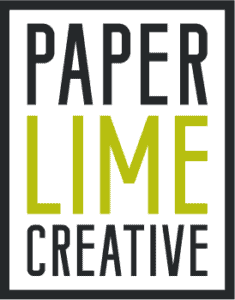What The Heck Does That Mean?
If you’re a business owner, you’ve probably been asked for the vector version of your logo, you’ve probably also thought… “What the heck?!”
That’s okay, you’re not alone! Here is a quick summary of what vector images are, what a raster image is and how to know which one to send when asked.
The difference between raster images and vector images is in how they are built, and how the files behave for graphic designers, web designers, promotional product experts and more!
Vector Graphics
Vectors are built using a fancy schmancy design term called “Bezier curves” essentially it’s a point and curve system to mark an outline. Think about staking your vegetable garden for example. You create a point (a stake) and use a thread or string to connect it to another point or stake.
Vectors are great for print design because they can be shrunk or expanded to any size. This is perfect for your logo which you will want to have the flexibility to go on a business card (about 2 inches), or a billboard (potential 8 or 10 feet!) Vector files don’t get blurry when they get bigger, so if you’re worried about clarity, this is the way to go.
There are pros and cons to both file types, and vectors aren’t great to have tons of detail because the more points (garden stakes) the greater the file size. While it’s not impossible, if you are wanting to do something like digital painting, raster files are the way to go.
Websites don’t support vector image files either, so it’s important to grab both vector and raster from your designer.
Raster Images
You’re probably more familiar with raster files. They’re made up of individual squares called pixels. Your cellphone takes raster images and any images off the web are raster images.
These puppies do blur (or pixelate) as you make them bigger. The image is trying to make up/guess what should be there and it results in a blurry image. The smaller you make a raster though, the sharper the quality.
I like to use the analogy of a book to explain raster files and scaling up or down. You can always rip out pages (scale it up) but once you’ve done that and lost the information, you can’t get it back!
Rasters are great for complex digital painting and photography. While complex and high-resolution images can have huge file sizes, raster images can get down to 100kb (small) for the web for fast loading times.
The Caveat of Raster vs Vector
Do your best to keep your files as original as possible from your designer. If you want to edit or modify it save a different file. Save it as version 2, or name it for it’s specific use (ie, logo_cancerfundraiser.jpg)
You can embed a raster image into a vector file type, so often I come across business owners who believe they have a vector file, and end up not. It’s like saving a Word document as a JPEG (something you can try on your own). It doesn’t necessarily mean there’s a picture in it, but it will prevent you from editing the text!
File Types
Common vector file types include .ai (Adobe Illustrator), .eps (Encapsulated Post Script), or even a .pdf (Portable Document Format)
Common raster file types include .jpg (Joint Photographic Experts Group), .png (Portable Network Graphics), and .tif (Tagged Image File Format)
If you’re ever asked for a raster or vector of your logo, these are safe guesses to send along.
Have the Wrong File Type?
Did this blog tell you that you’re missing some files? Fear not! Paper Lime Creative is happy to rebuild your logo files so that you have everything you need. Book a consultation call with us today to get a quote!
